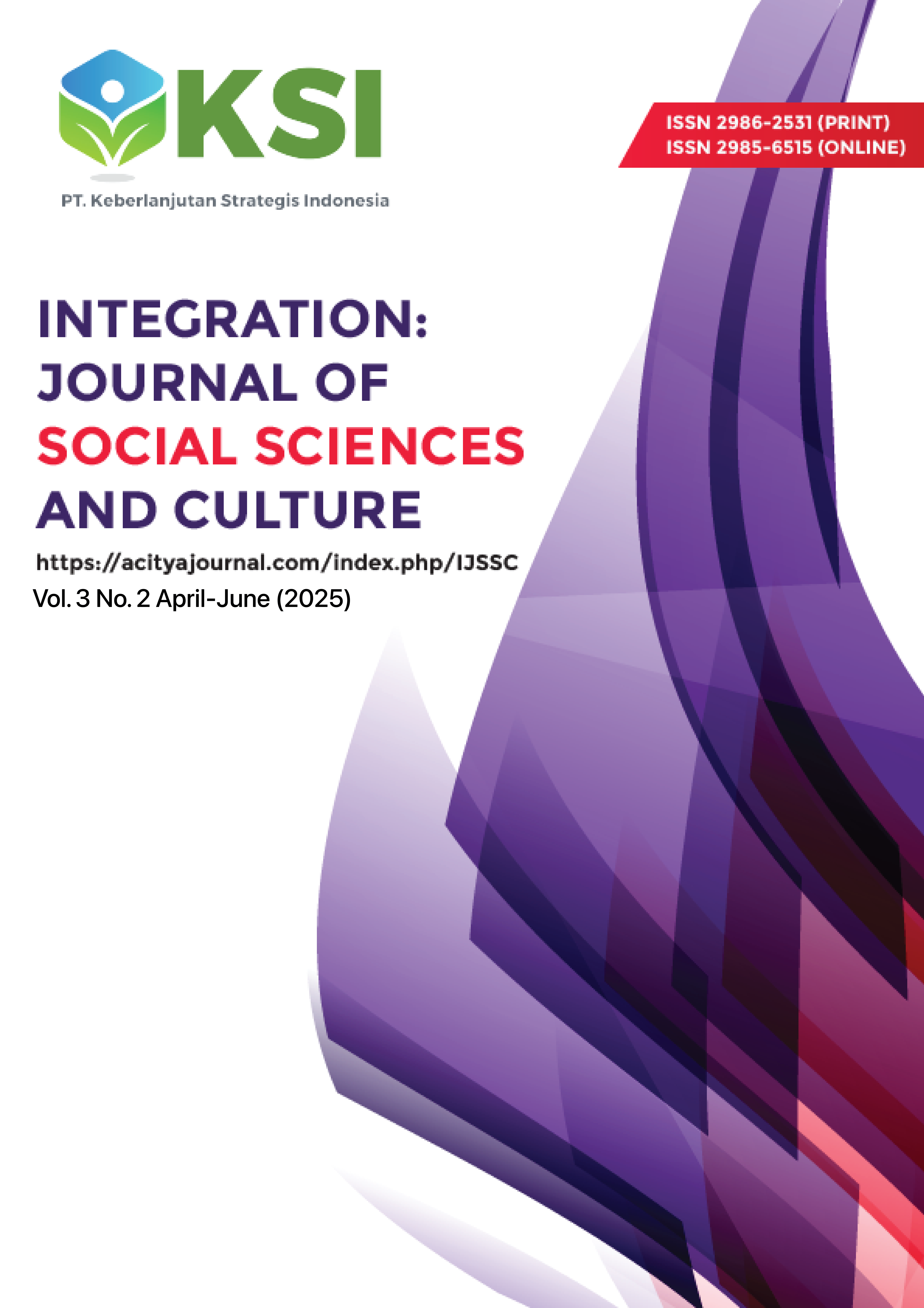Utilization of Zinner's Creativity in Developing the Rhythmic Pattern of the Blue Bedug Percussion Group as an Educational Medium in Early Childhood Education
DOI:
https://doi.org/10.38142/ijssc.v3i2.309Keywords:
Creativity, Educational Media, Sensory and MotoricAbstract
Purpose:
The research entitled "Utilization of Zinner's Creativity in the Development of Rhythmic Patterns of the Blue Bedug Percussion Group as an Educational Media in Early Childhood Education" discusses how the results of Zinner's creative process in developing rhythmic patterns can have an impact on sensory and motor development in early childhood.
Methodology:
Rhodes' theory of the dimensions of creativity will discuss the process of creativity that can become educational media. Data collection techniques are carried out through observation, literature studies, interviews, and documentation.
Findings:
The results of this study show that Zinner's creativity in developing the rhythmic pattern of the blue bedug percussion group can be used as an educational medium in early childhood education.
Implication:
This study highlights that creativity in music is the result of a tortuous process involving internal and external drives, as well as a gradual accumulation of learning, interaction, and exploration. The composition Bedug Biru created by Zinner is clear proof of this, born from responsibility, cross-cultural knowledge, and experience to produce a work that suits the needs, audience, and abilities of the players.
Downloads
References
Ali. & Asrori. (2006). Psikologi Remaja: Perkembangan Peserta Didik.
Bandem, I. M. (2001). Metodologi Penciptaan Seni. Karya Cipta Seni Pertunjukan, 455.
Blanc, S. (1997). African Percussion: The Djembe. Percudanse Association.
Davidoff, L. (1991). Psikologi Suatu Pengantar: Jilid 2. Alih Bahasa. Drs. Marijuniati. Jakarta: Erlangga.
Irfani, A. (2015). Demam India di Indonesia. Al-Hikmah Jurnah Dakwah, 9(1), 2015. https://doi.org/10.24260/al-hikmah.v9i1.90
Jakob, S. (1999). Catatan Kecil tentang Menulis Cerpen. Yogyakarta: Pustaka Pelajar.
Kurnia, G., & Nalan, A. S. (2003). Deskripsi Kesenian Jawa Barat. Kerjasama Dinas Kebudayaan & Pariwisata, Jawa Barat [dengan] Pusat Dinamika Pembangunan, Unpad.
Moh Nadir. (2014). Metode Penelitian, cet. 10. Bogor: Ghalia Indonesia.
Munandar, M. (2016). Kreativitas & Keberbakatan Strategi Mewujudkan Potensi Kreatif & Bakat.
Munandar, U. (2004). Pengembangan Kreativitas Anak Berbakat. Rineka cipta.
Munandar, U. (2009). Pengembangan Kreativitas Anak Berbakat. Rineka cipta.
Panjaitan, A. H., & Surya, E. (2017). Creative Thinking (Berpikir Kreatif) Dalam Pembelajaran Matematika. Aba Journal, 102(4).
Prissanti, L. D. (2016). Eksistensi Alat Musik “Djembe” Di Tanggung, Blitar, Jawa Timur (Doctoral Dissertation, Isi Surakarta).
Reni Akbar H, S. (2001). Psikologi Perkembangan Anak Mengenal Sifat, Bakat, dan Kemampuan Anak. Jakarta: Grasindo.
Roberts, J. S. (1999). The Latin Tinge: The Impact of Latin American Music on the United States. https://doi.org/10.1093/oso/9780195121001.001.0001
Santrock, J. W., Sumiharti, Y., Sinaga, H., Damanik, J., & Chusairi, A. (2002). Life-Span Development (Perkembangan Masa Hidup Jilid 1.
Sukarna, A. (2015). Pedoman Pembelajaran Pencak Silat. Bandung: Sanggar Seni Budaya ECO Bambu Cipaku.
Sumardjo. (1999). “Transformasi Model Penyuluhan Pertanian Menuju Pengembangan Kemandirian Petani: (kasus di Provinsi Jawa Barat),” disertasi. Bogor: Program Studi Pasca Sarjana. Institut Pertanian Bogor.
Supriadi, D. (1994). Kreativitas, Kebudayaan dan Perkembangan IPTEK, CV. Alfabeta Bandung.
Suwarto, H. Dkk. (1996). Seni Musik 2 untuk SMP Kelas VII. Jakarta: PT Galaxy Puspa.
Downloads
Published
Issue
Section
License
Copyright (c) 2025 Mayasari MAYASARI, Dety MULYANTI

This work is licensed under a Creative Commons Attribution-NonCommercial 4.0 International License.
Creative Commons Attribution-NonCommercial 4.0 International License.











.png)







